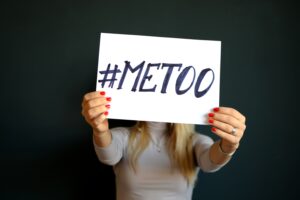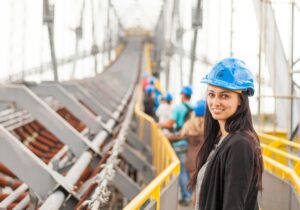The Current State of Domestic Violence Services, Part 2
A few months ago, I wrote a blog post laying out a substantial set of concerns I have regarding the direction that domestic violence work has been heading in across the U.S. and Canada. I promised in that post that I would write a second post on the subject to discuss some more details, and then propose solutions and new directions. Someone going through domestic violence will feel like they have no way out and when they try and stand up for themselves, their abusers may try and have the tables turned on them to make them out to be the bad person, that is why speaking to a domestic violence attorney in Harrisburg or wherever the person is based, is incredibly important to fight these allegations and have their voices heard and believed when they say that they are the victim and they are the ones being hurt, not the other way round, as some abusers can attempt to do.
It turns out there’s going to be more than just a Part 2. The more I write about this, the more there seems to be to say.
By the way, I received many responses to Part 1 from other continents, with the writers reporting similar problems and trends in their own countries, so my observations seem to apply beyond the U.S. and Canada.
WE’VE STOPPED ADDRESSING ROOT CAUSES
Intimate partner violence against females is caused by systems and structures that are built into society. We can “serve” women while ignoring those causes – and those services are valuable to the individuals who receive them – but we aren’t doing anything to actually stop or lessen the abuse that women overall experience.
What are the key causes of domestic violence against women?
1) The oppressed status of women in society
The U.S. has refused to pass a constitutional amendment guaranteeing equal rights for women. (Need I say more?) Females are paid less than males; are subject to far more sexual violence, child sexual abuse, and trafficking; are given fewer opportunities for career advancement; are kept in fear in all kinds of ways; are steadily harassed, belittled, and made to feel less-than (from early in life); and the list goes on. (You might read my article “Talking Man to Man About Sexism.”)

Here is the key point: oppression both causes and requires violence.. Oppression causes violence because members of the society are taught to demean and despise members of the oppressed group, and are taught that violence against that group is excusable or even necessary. Oppression requires violence because any people whose rights are taken away will fight to get their rights back, and the only way to stop them from taking their rights back is to terrorize them with violence and the threat of violence. Without violence, men would not be able to keep women second-class and subservient.
2) The exploitation of poor and working people across the continent
Millions of abused women are trapped by the fact that they simply do not have the economic resources to make escape possible, especially if they have children. This would not be the case if we lived in societies that did not have a vast division between rich and poor. While abused women get trapped for all kinds of reasons, the economic trap is at the very top of the list.

It all pretty much comes down to these two factors, though there are certainly others that contribute (such as the overall glorification of violence, including war, that are endemic to our societies).
When we focus on what’s wrong with each individual abuser, we are ignoring the fact that he is the product of a society that has trained him, since early in life, to believe that he has the right to extract things from women – sexuality, domestic service, love, attention, ego-building, deference, you name it – and that he has the right to enforce his will if a female attempts to defend herself against his invasions.
That’s what domestic violence against women is all about: extraction and enforcement.
What I find so painful after 30 years working in the domestic violence field is that I hardly ever hear anyone talking about the oppression of women anymore, or about women’s rights, or about male domination, or about our economic system that keeps forcing women and children into poverty.
These are not “additional” issues, as in, “Well, we can’t address all those additional issues, we need to stay focused on domestic violence.” These issues are the issue. These are the primary causes of domestic violence; and if we don’t fight to overthrow these oppressive systems, we aren’t actually doing anything to change the number of women who will be living under the tyranny of male violence thirty or forty or fifty years from now.
WE’VE STOPPED ORGANIZING COLLECTIVE RESPONSES
Domestic violence work has become focused on helping individuals – which is very important – but has stopped attending to changing social structures and to organizing collective action. Agencies do occasionally organizie marches or rallies, but it’s become a smaller and smaller part of what we do. And even those events tend to be about “domestic violence awareness” which is a different message from “protesting violence against women and demanding that it stop.”

Most important, though, is that these events are just that – events. They aren’t part of a strategy of building an organization that can protest institutional collusion with domestic violence and agitate for change. We aren’t developing protest leaders, we’re developing service providers. We’ve got to do both, as I’ll come back to discuss in a subsequent post; the training of organizers, and the development of a long-term strategy for social change, can’t keep getting pushed to the side.
Coming next: Part 3: Why Did We Make These Mistakes?
Then: Part 4: Where Do We Go From Here?
Credits:
Photo by Mihai Surdu on Unsplash Me Too
Photo by Claudio Hirschberger on Unsplash Woman Working on Bridge
I’m afraid I don’t remember where I got the third picture from — it’s a huge protest in Chile several years ago





This newest series Lundy, where you address the fact that so few have the courage to address; the fact that we are not only not progressing in the fight against “domestic violence” but that we are worse off than we have ever been before (BECAUSE we think we have solved it!) is quite possibly the most important thing you have ever written.
I thank you.
Speaking the Truth, that it really IS that bad, that it is not our fault, and that we will never achieve any real change until we acknowledge the actual reality, is the greatest gift you can give those of us who are living in this apocalypse of misogyny.
Thank you, thank you so much for all you do. I have been trapped in an emotionally abusive marriage for over a decade, and only recently woke up to realize what was going on. Your book, Why Does He Do That, has been a huge eye opener for me. It’s also like a friend I so wish I had. Thank you and never stop speaking against abuse!
As an advocate who left the field precisely because of these reasons, THANK YOU.
I was told to tell a survivor who asked to volunteer that we had no available openings, because we had handled her case two years ago and the agency veterans decided she “isn’t healed enough” or “ready yet” to do advocacy or DV/SA support work. This from the same people who, when training me, gave lip-service to the empowerment model.
Our state coalition just “rebranded,” removing the term “battered women” from its name to become “Violence Free Minnesota,” purportedly to be more inclusive for victims, but at the expense of diverting attention from the core systems enforcing violence on all oppressed minorities including LGBTQIAA+ people.
The agency that I worked for required that we provide resources and services to abusive men calling in claiming to be victimized by the women who they just put in the hospital. There were multiple cases where the abuser contacted us for a restraining order first, and the woman was deemed a “conflict of interest” and forced to receive services from a different county, in many times despite the original male “victim” having been arrested and charged for injuring the female “conflict.”
Our agency now REGULARLY has “victim advocates” on both sides of the courtroom in restraining order hearings– what kind of message is that sending the judges, the police, the community?
Something needs to change. I am excited to read, share, and discuss the next parts of this series. It is so important we start talking about this.
Thank you for your work Lundy! I am lucky to have a good d/v center close to me. BUT they are limited to what they can offer. For me financial abuse was a front runner for not leaving. But I made peace with that. What I could not get past was the fact that my Children’s Father who was abusive in many ways to the kids and I would end up having alone time with them no matter what i proved he had done to us. I literally sacrificed myself for 3 years of torment after initially filling for divorce just to be the mediator/scape goat for abuse. Here I am again in Probate court getting harassed by high priced lawyers while I am Pro Se. My kids have been seeing Dad in a supervision center that can not see through him, their complex trauma symptoms are full throttle and I have no recourse but to be strong. Domestic violence should be a punishable crime forget family court and parental rights, human rights should supersede!
I am interested in developing fictional characters who portray the characteristics of angry abusive men who are not physically violent or sexually abusive. My character is more subtle and perhaps more scary and certainly more prevalent. Your book opened my eyes to them. Any other sources? Fictional or nonfiction?
Yes, I totally agree with everything you said. They are not separate issues and to treat them as such means the root cause will not be fixed.
PS you might consider changing “females” as a noun to “women.” Most women don’t like being called “females” as we feel it dehumanizes us. Obviously as a verb it’s ok (female protesters). But we don’t like it as a noun (the females at the protest). This is a newer thing, like past 5 years or so but you’ll find that it’s disliked by most women.
I found your books about 6-7 years ago and I often reread them. I have three boys & I am terrified! How do I make sure they don’t repeat what they’ve seen. How do I stop getting in unhealthy relationships. My biggest fear is leaving one for another unhealthy one. I really want to learn how to get out of these cycles and it seems so hard in every way. I love everything you wrote and hope one day it sticks for me. I think you are doing great things! Thank you ?
Try Dr Dina MacMillan’s book and/or podcast series – it will give you the information you need to avoid the abusers before you become involved. Good luck.
Lundy, you had mentioned in one of your videos where you were being interviewed that you wish more would join support groups. The reason some of us don’t is because we have become targets by other women, both at work and in groups of women.